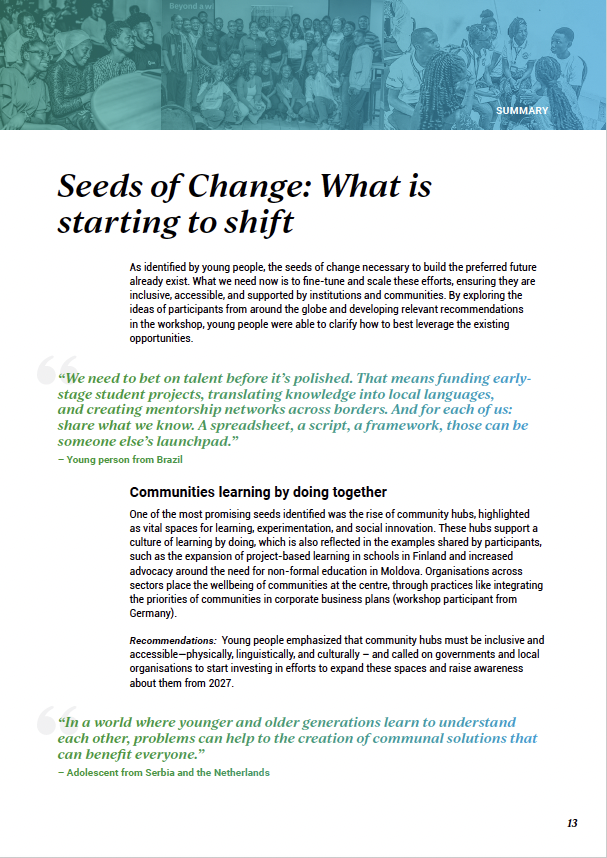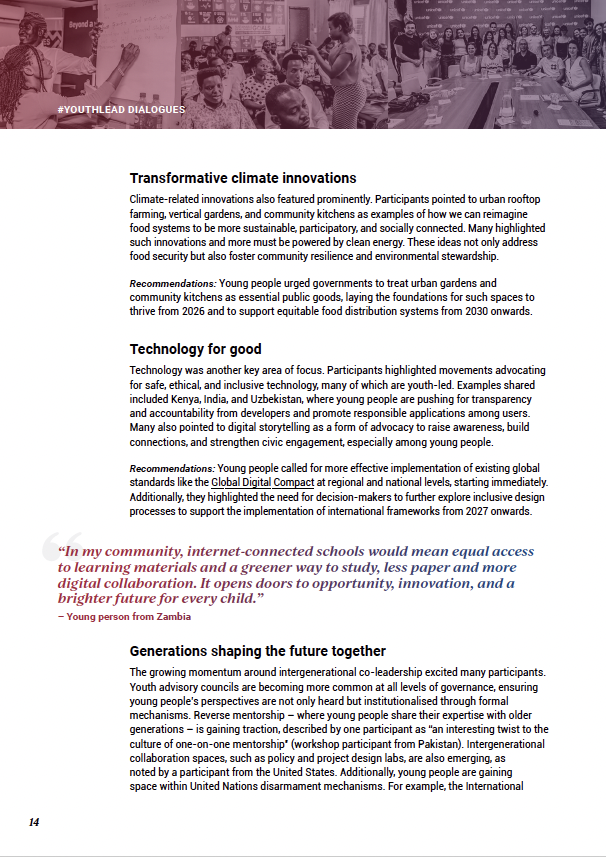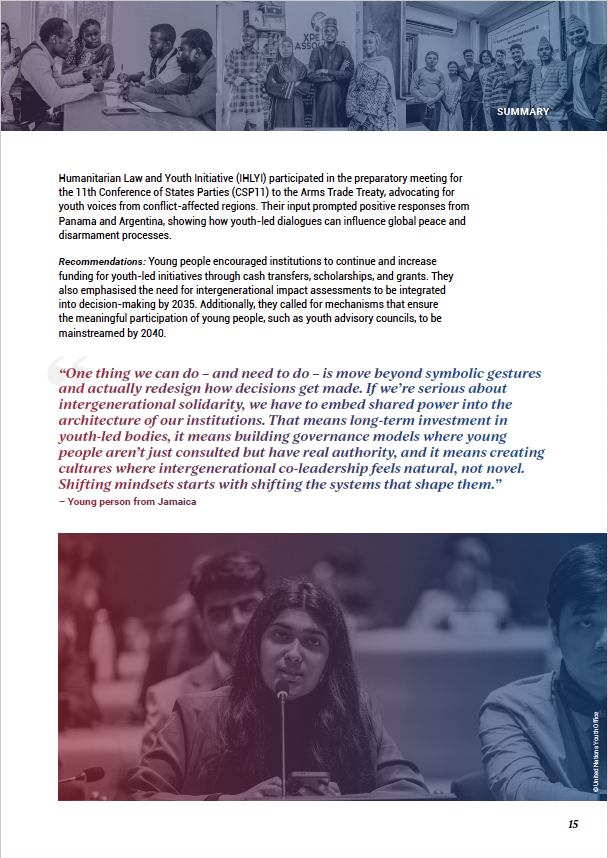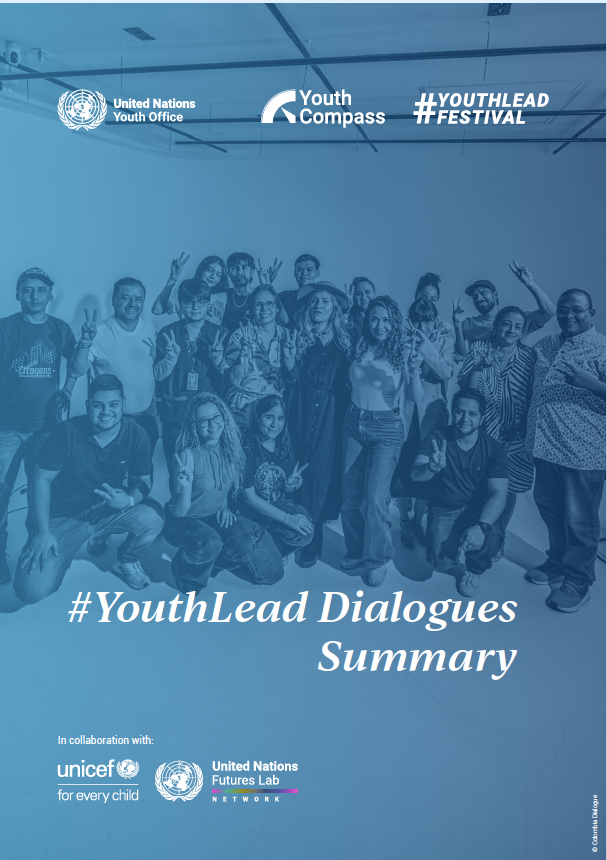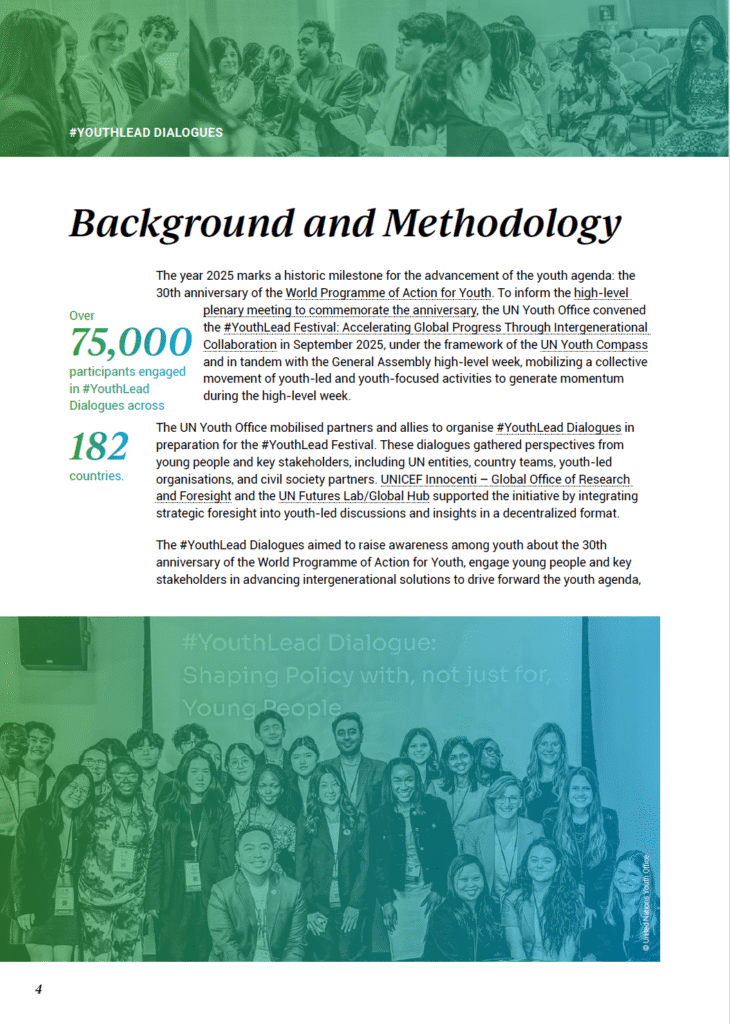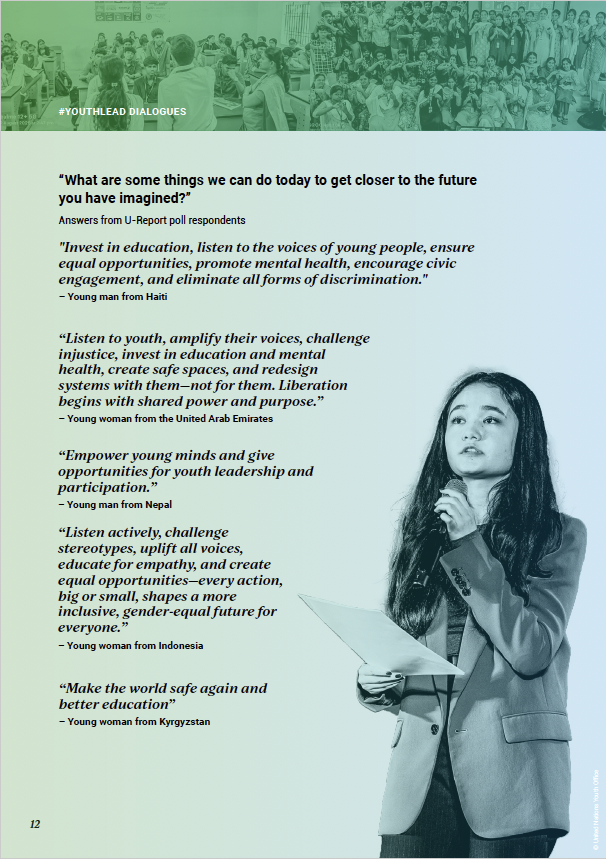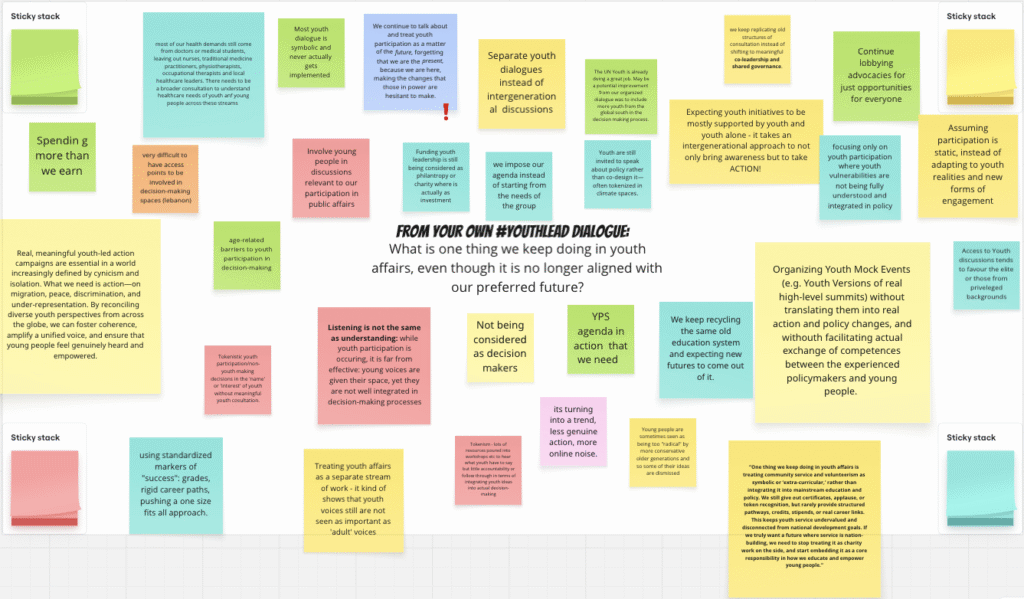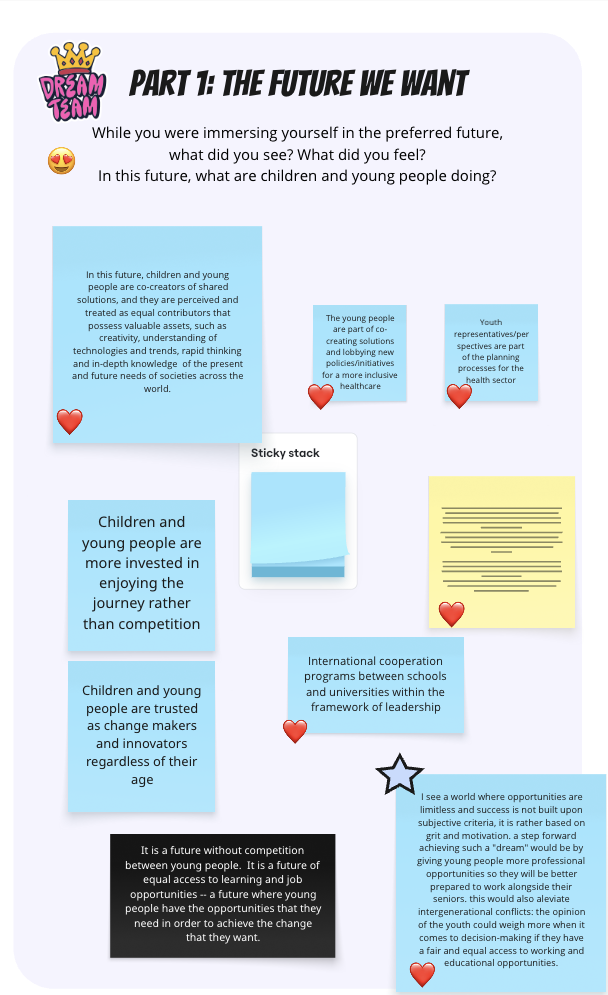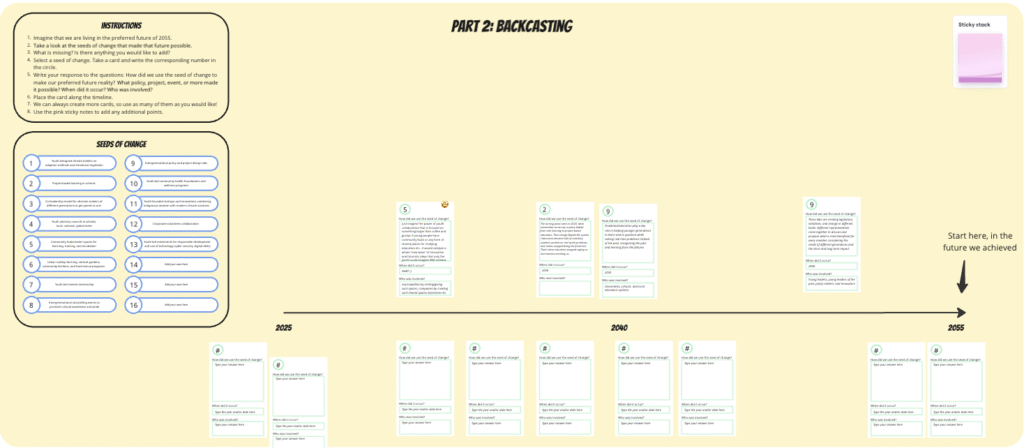#YouthLead Dialogues
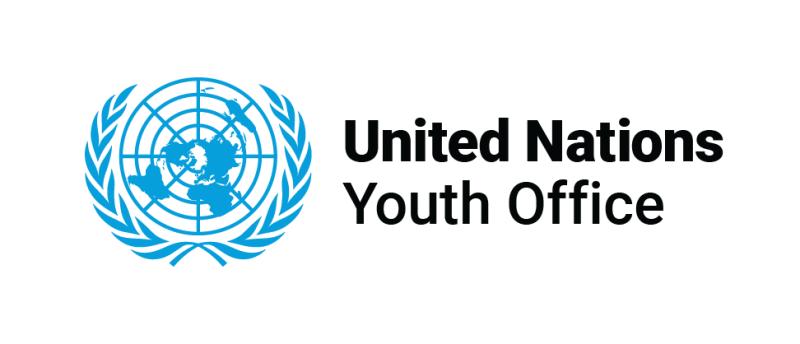


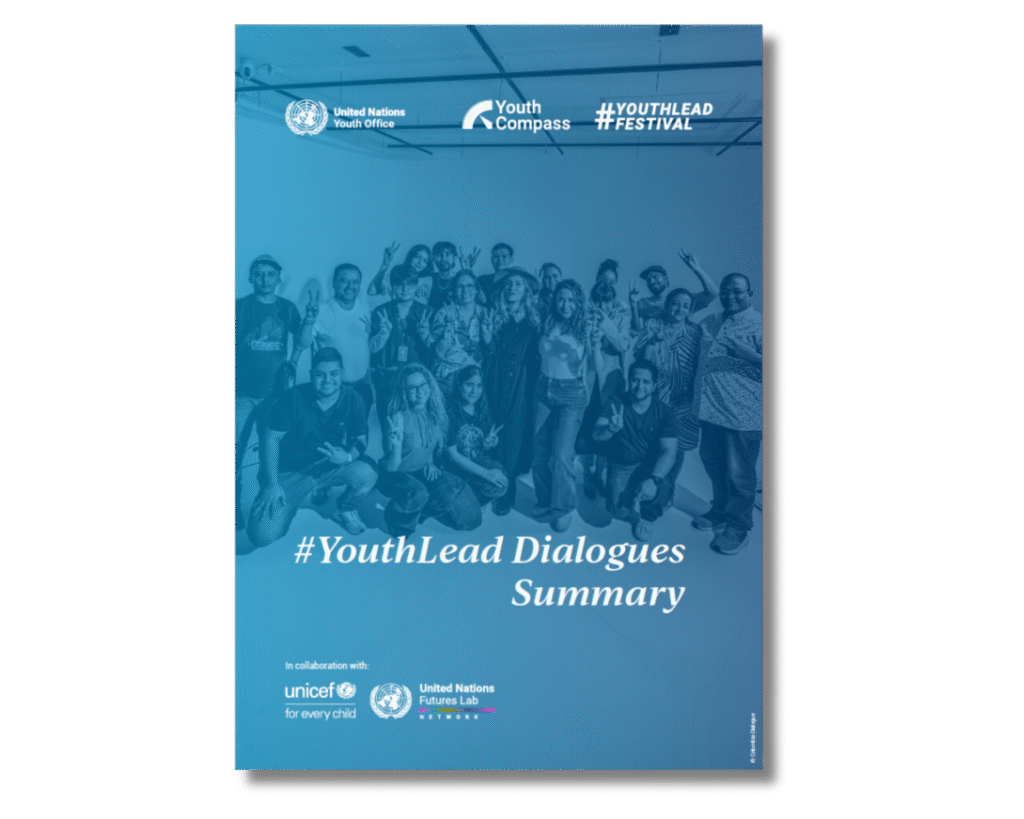
How can youth foresight turn today’s challenges into tomorrow’s transformative futures?
In commemoration of the 30th anniversary of the World Programme of Action for Youth (WPAY30), the UN Youth Office convened the #YouthLead Festival: Accelerating Global Progress Through Intergenerational Collaboration in September 2025, under the framework of the UN Youth Compass and in tandem with the General Assembly high-level week, mobilizing a collective movement of youth-led and youth-focused activities to generate momentum during the high-level week.
A participatory process for imagining futures
The UN Youth Office mobilised partners and allies to organise #YouthLead Dialogues in preparation for the #YouthLead Festival. These dialogues gathered perspectives from young people and key stakeholders, including UN entities, country teams, youth-led organisations, and civil society partners. UNICEF Innocenti – Global Office of Research and Foresight and the UN Futures Lab/Global Hub supported the initiative by integrating strategic foresight into youth-led discussions and insights in a decentralized format.
In the first phase, young people and key stakeholders around the world organised their own discussion spaces using a set of guiding questions. Guided by the Three Horizons Framework, participants started with Horizon 1 to share observations about the systems they currently live in, especially those aspects that no longer serve us and are in decline. Horizon 3 encouraged participants to envision bold, transformative futures that reflect their hopes and aspirations. Horizon 2 invited participants to identify “seeds of change”— innovations, ideas, and practices already emerging today. In July and August 2025, insights from over 75,000 young people in 182 countries were generated, sharing the realities they face today, the futures they want to build, and the actions to get us there.
The series of youth consultations culminated in a #YouthLead Dialogue: Foresight Workshop that took place on 4 September 2025. Drawing on insights from the decentralized youth foresight exercise, the virtual workshop engaged more than 40 youth from all regions in a Back Casting exercise to develop recommendations in realizing shared visions and seeds of change. During the exercise participants were encouraged to imagine that the preferred future had already been achieved. Then, they traced a 30-year path back to the present, identifying milestones and interventions that contributed to building the preferred future.

This process was designed not only to equip young people to navigate and shape policymaking and decision-making, but also to strengthen institutions to accelerate meaningful youth participation. Outcomes from this process are captured in the #YouthLead Dialogues Summary report to inform the High-Level Meeting convened by the Office of the President of the General Assembly on 25 September 2025, under the theme “World Programme of Action for Youth at 30: Accelerating Global Progress Through Intergenerational Collaboration”. The meeting brought together Member States, young people, civil society, and UN entities to take stock of progress, share innovations and good practices, address current challenges and solutions, and chart the way forward through intergenerational collaboration.
Why youth foresight matters
The ideas presented in the report help to ensure that youth perspectives guide policies and programmes at every level. This demonstrates that multilateralism is not confined to closed rooms. It flourishes wherever young people are heard and shows us that fostering youth participation in decision-making means meeting them where they are.
Youth foresight provides the space for young people to connect with each other, learn from the diverse contexts they represent, and build on points of convergence towards collective action. Deconstructing ways through which the preferred future could be reached has inspired excitement and agency, while highlighting areas for prioritization and milestones.
“Young people’s message is urgent, inspiring, and clear. The future they imagine – one grounded in peace, justice, equality, inclusion, sustainability, and solidarity – is not a dream too distant or idealized; it is practical, realistic, and within our reach. Yet the gap between this vision and today’s realities remains wide. From barriers to education and decent jobs, to rising mental health concerns, the climate crisis and eroding trust in institutions, young people are deeply concerned about the world they live in. Closing this gap requires urgent action – nurturing seeds of change, restoring hope, and forging the way forward together.”– Felipe Paulier, Assistant Secretary-General for Youth Affairs
Key highlights from the Report
Young people identified the priorities and barriers that prevent them from reaching their full potential, including a critical examination of well-intentioned norms and systemic limitations, which helped surface a nuanced understanding of the current landscape from the perspective of young people:
- Employment and economic opportunities (40%)
- Education (30%)
- Health (10%)
- Technology (10%)
- Youth leadership (8%)
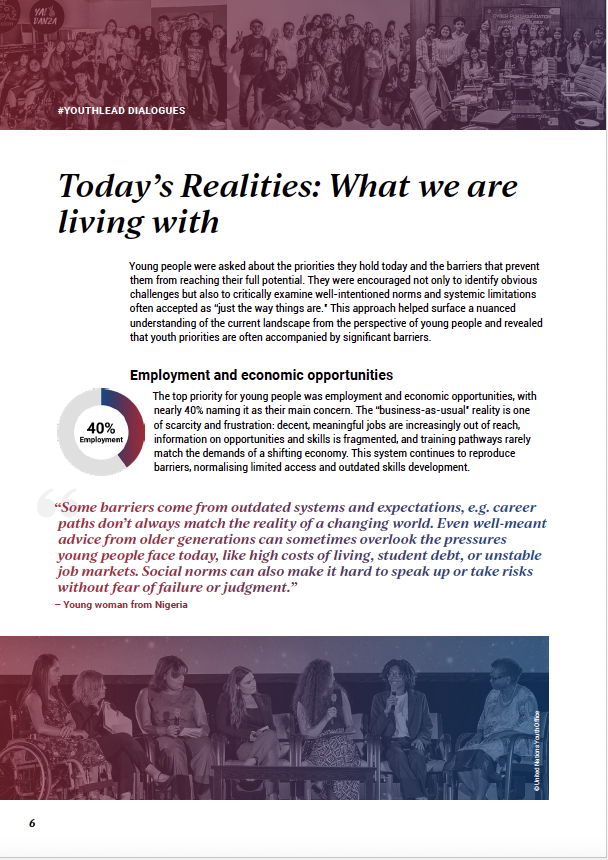
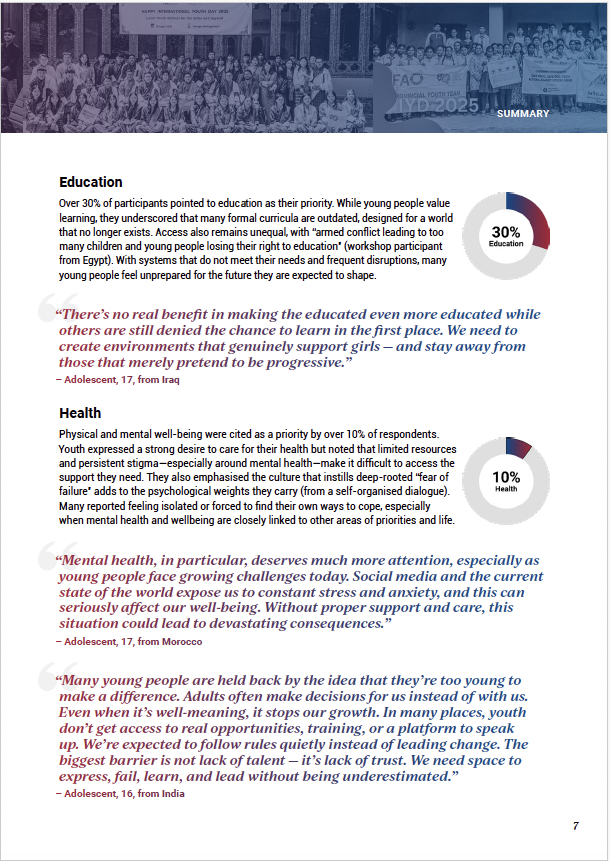
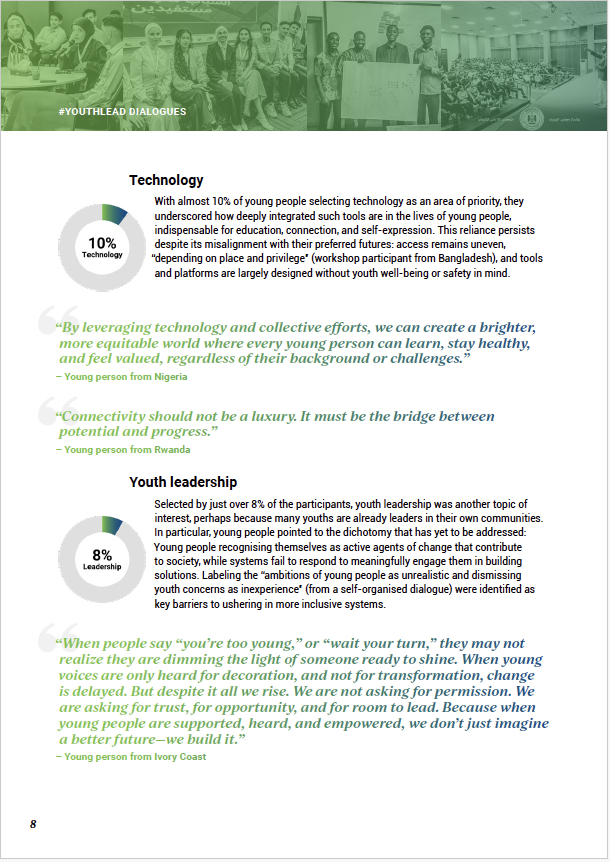
The idealism of youth has been a driver of change throughout history, and visioning preferred futures provides a sense of direction and purpose, especially in times of uncertainty and anxiety when positive visions are most needed. The preferred future is characterized by:
- Education that equips learners to contribute meaningfully to society
- Well-being as a collective responsibility
- Environmental sustainability embedded in everyday life
- An inclusive environment that values collaboration over competition
- Intergenerational cooperation rooted in mutual respect, solidarity and shared responsibility
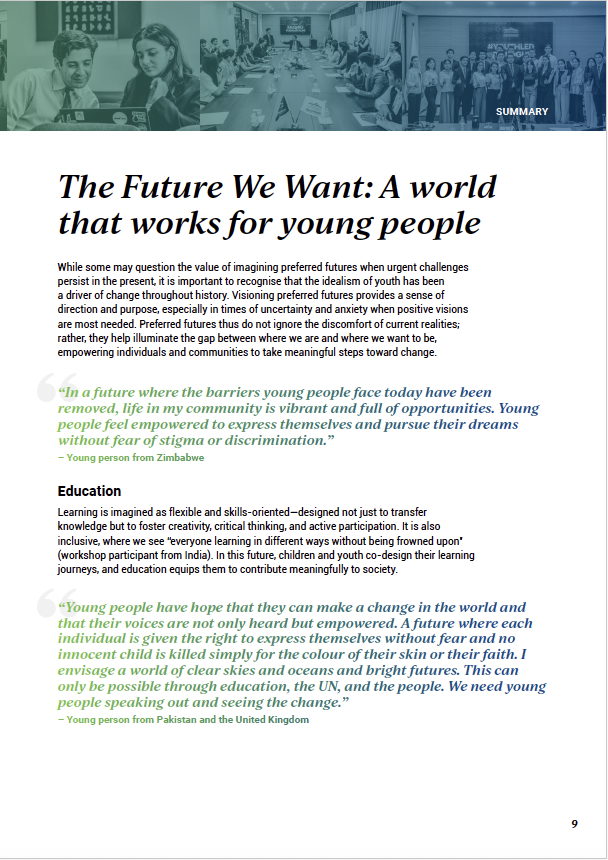
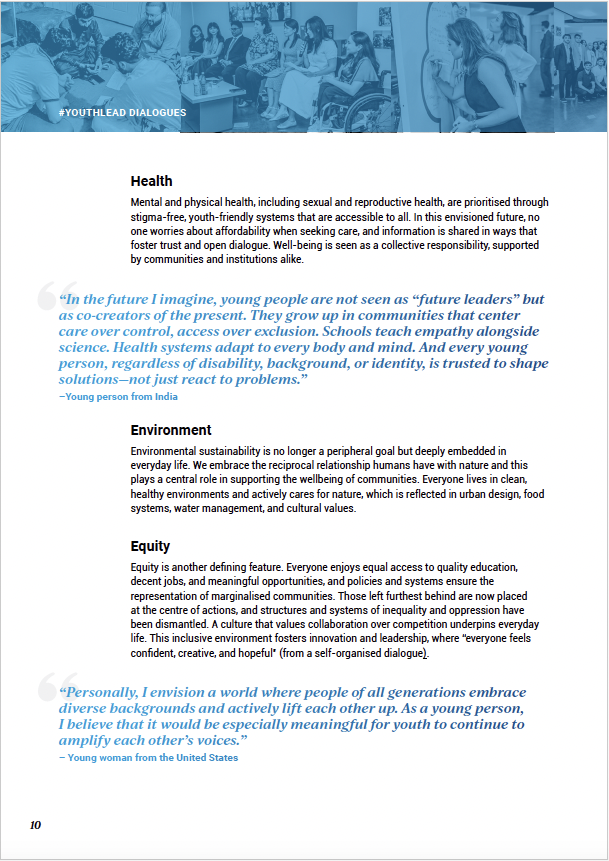
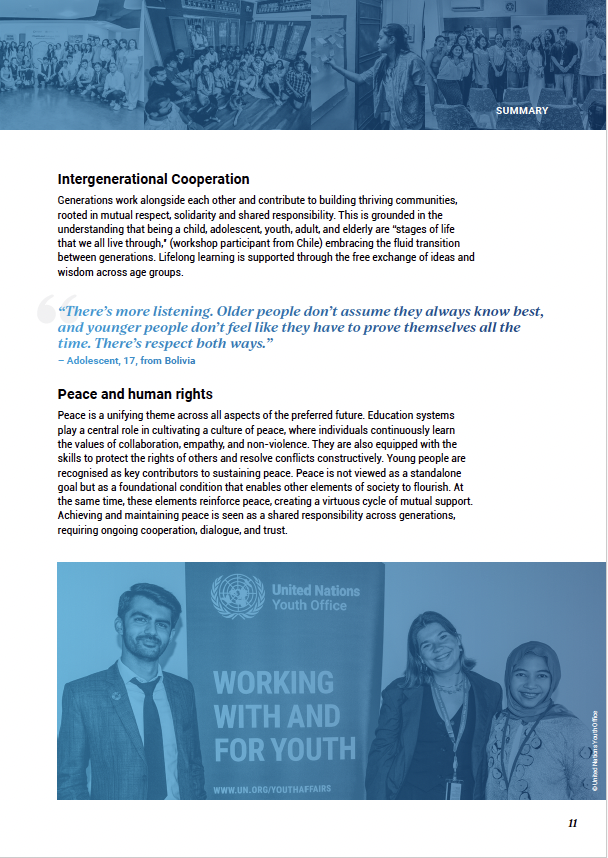
Seeds of change that are necessary to build the preferred futures already exist – they just need to be fine-tuned and scaled to ensure they are inclusive, accessible, and supported by institutions and communities. Existing opportunities that can be leveraged include:
- Community hubs and sectors which place the wellbeing of communities at the centre, through practices like integrating the priorities of communities in corporate business plans
- Transformative climate innovations, such as clean energy, food security, forest community resilience and environmental stewardship
- Harnessing technology for good through implementation of existing global standards like the Global Digital Compact at all levels, and inclusive design processes to support the implementation of international frameworks
- Generations shaping the future together through funding, intergenerational impact assessments, and mechanisms for meaningful youth participation such as youth advisory councils
- Anchoring visions in concrete milestones, while highlighting the need for structural changes across systems and sectors, demonstrates young people’s strategic foresight and keen understanding of the interconnected nature of the priorities they identified.
- Youth leadership is not emerging—it is already here. Many of the seeds of change are already being planted and nurtured by young people themselves, building on momentum that is already gaining ground. By meaningfully engaging youth in decision-making and integrating foresight to strengthen the anticipatory capacity of institutions, we can move beyond imagining the future to actively building it.
